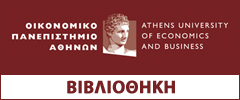| Abstract : | This thesis deals with stochastic models in production systems and the research conducted followed three directions: queueing models in production, quality control, and run statistics. These are presented independently of each other but there are clear interconnections between them. The first part of the thesis (Chapters 1 and 2) deals with success runs in Markov--dependent binary trials. There we develop a new methodology based on a Central Limit Theorem for additive functionals of Markov chains in order to establish the asymptotic normality of the joint distribution of different types of success runs. The approach is based on expressing the number of runs in terms of the number of visits of an appropriately defined Markov chain to certain states, or in terms of the number of state transitions of the chain. Then we take advantage of the connection of the asymptotic covariance matrix for such functionals to the recurrent potential matrix (fundamental matrix) of this chain. The last step is to express the elements of the potential matrix in terms of the mean transition times between states for the Markov chain and thus to obtain explicit, closed form expressions for the limiting covariance matrix. In many cases this has led to new results. In the second part (Chapter 3) we analyze the performance of several continuous sampling plans such as CSP-1, CSP-2, CSP-3, CSP-C, and Tightened Multi-Level (3) under the assumption that the quality of the examined items exhibits markovian dependence while probability sampling is used during the sampling inspection phase for each sampling plan. The assumption of markovian dependence in the quality process is essential since the Bernoulli assumption which is often used for analytical convenience fails to capture the essential features of these plans that aim to capture shifts in the quality process. We present a method for computing the exact probability generating function for the joint number of items (defective and nondefective) both for the continuous inspection phase and for the sampling inspection phase, using a markovian analysis. For each plan we derive exact results for the Average Fraction Inspected (AFI), the Fraction Defective Outgoing (FDU), the Average Outgoing Quality (AOQ), both for replacement and for non-replacement policies and finally we present numerical results that provide comparisons between the plans. The third part (Chapters 4, 5, and 6) considers queueing problem arising in the analysis of manufacturing systems. In chapter 4, we examine the operation of a quality control unit that uses a Continuous Sampling Plan (CSP) policy, placing particular emphasis on the delay aspects of the inspection station and on the effects of the inspection process on flow times. In particular, we examine markovian models of the inspection station and analyze the delay and queueing aspects of the CSP policy assuming exponential inspection times using matrix geometric techniques. We also examine the indirect effects on the inspection process on flow times due to the modulation of the downstream arrival process by the inspection process and the corresponding increase of variability. In chapter 5 a queueing model with Poisson arrivals, random processing batches, and vacations is examined, specifically based on the Queue-Cart model of Coffman and Gilbert [37] and we extend their results to the case where the cart's capacity varies stochastically and customers arrive in batches. We also examine processing batch distributions with unbounded support and provide a solution via Wiener-Hopf techniques. In all cases care is taken in the analysis in order to obtain the steady state distribution without the assumption that the service and cart delivery time distributions are light-tailed. In fact, our results are obtained under the natural conditions of finite first moments, together with the stability condition which guarantees the existence of a stationary version of the process. Finally, in chapter 6, we examine an M/G/1 queueing model with batch arrivals subject to disasters. The model includes a randomized vacation policy and repair times after disasters. By applying the supplementary variables method various performance criteria were obtained such as the queue length distribution, the Laplace transform of the waiting time, the Laplace transform of the busy period, and the probability that a typical customer suffers a disaster.
|
|---|







 Copyright © 2013 Library AUEB. All rights reserved.
Copyright © 2013 Library AUEB. All rights reserved.